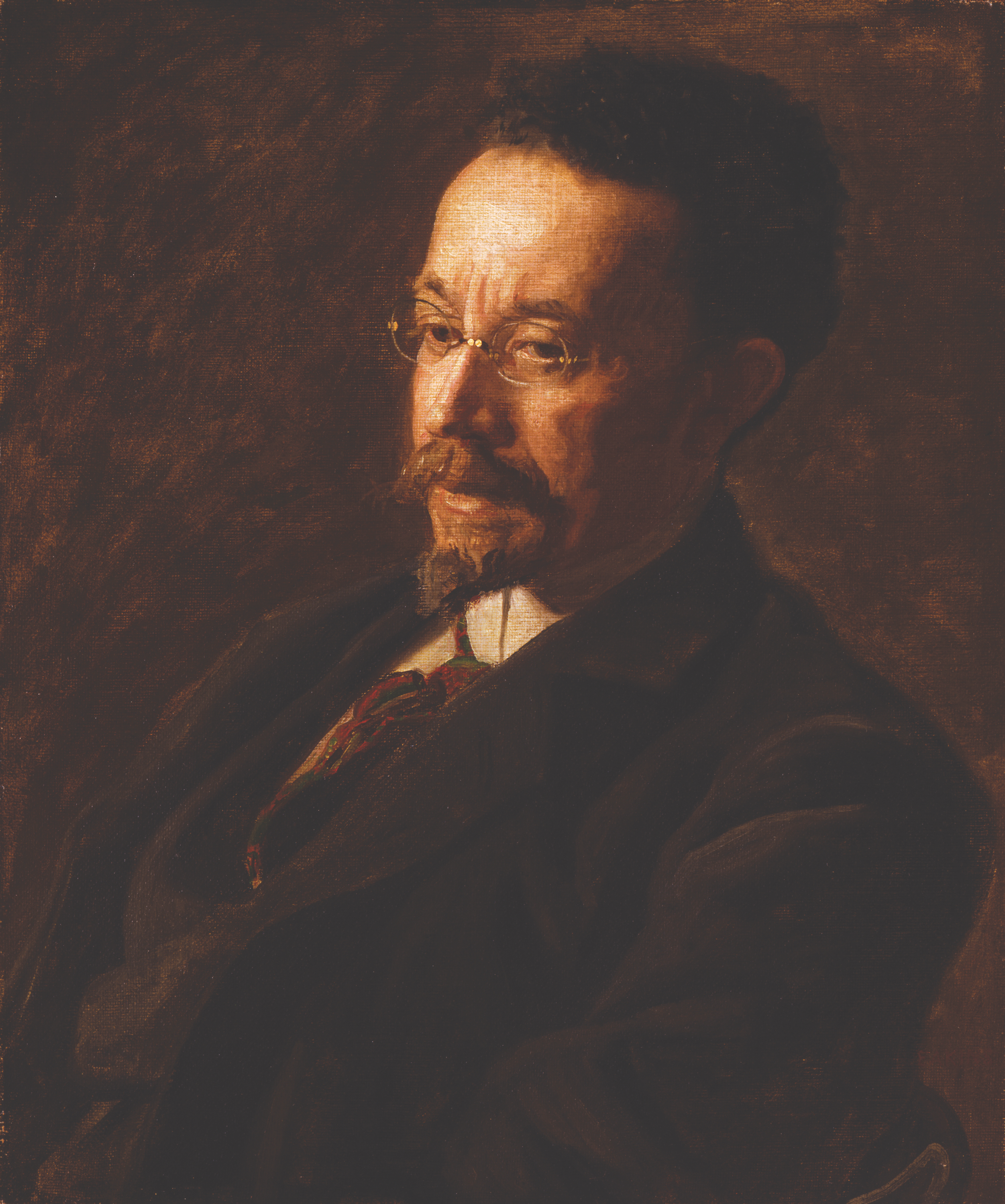The purpose of most portraits besides preserving a semblance of the sitter’s appearance is to immortalize their wealth, power, privilege, or fame. With this portrait, a teacher honors a pupil and celebrates a creative genius many of their fellow Americans could not and would not recognize.
The portraitist was Thomas Eakins, one of American’s greatest painters in the final quarter of the 19th century and an influential teacher. He took a somewhat unconventional approach to painting, advocating direct and careful observation from nature. Eakins rose rapidly to the position of director of the Pennsylvania Academy of Fine Arts, the country’s leading art school, but lost the position after being accused of exposing female students to a nude male model.
This sitter is Henry Ossawa Tanner, the first internationally known African-American artist. He was born in 1859, the child of a bishop in the African Methodist Episcopal Church and of a runaway slave. Initially self-taught as an artist, he became a student of Eakins at the Pennsylvania Academy of Fine Arts during the period of Reconstruction. There, he was bullied and racially abused by his fellow students. Afterward, like many of his American contemporaries, he aspired to complete his education in Europe. Pre-World War I Paris was the cultural capital of the world. He graduated from the Academie Julian, an accomplished painter of the human body, architecture, and landscape, a combination of skills that allowed him to reach the apogee of Western art, the production of historical and religious imagery. Sponsored by the American department store magnate Rodman Wannamaker, Tanner traveled to Palestine. His paintings of Biblical and oriental scenes were celebrated, in part, for their authenticity. Like many later African-American artists—painters, writers, and musicians—Tanner found Paris to be more welcoming than any American city and he lived there for most of his adult life, receiving the recognition due his creative genius.
This portrait was painted in 1902, during a brief trip home. It was a personal tribute by Eakins of his now-famous pupil. Indeed, Eakins is only known to have painted a handful of his former students. The artist kept this portrait in his possession until his death. Whereas many of his contemporaries could not acknowledge the creativity of a black man because of their racial prejudice, Eakins immortalizes it here. He deliberately employs an ancient artistic convention, one that the great artists of Classical antiquity and the Renaissance would have recognized. Eakins bathes Tanner’s forehead in a warm light, symbolizing his inner creative genius that was the gift of the Muses.
We present today's painting thanks to The Hyde Collection.
P.S. Get to know more about Tanner, the African-American artistic pioneer here!


 Thomas Eakins
Thomas Eakins